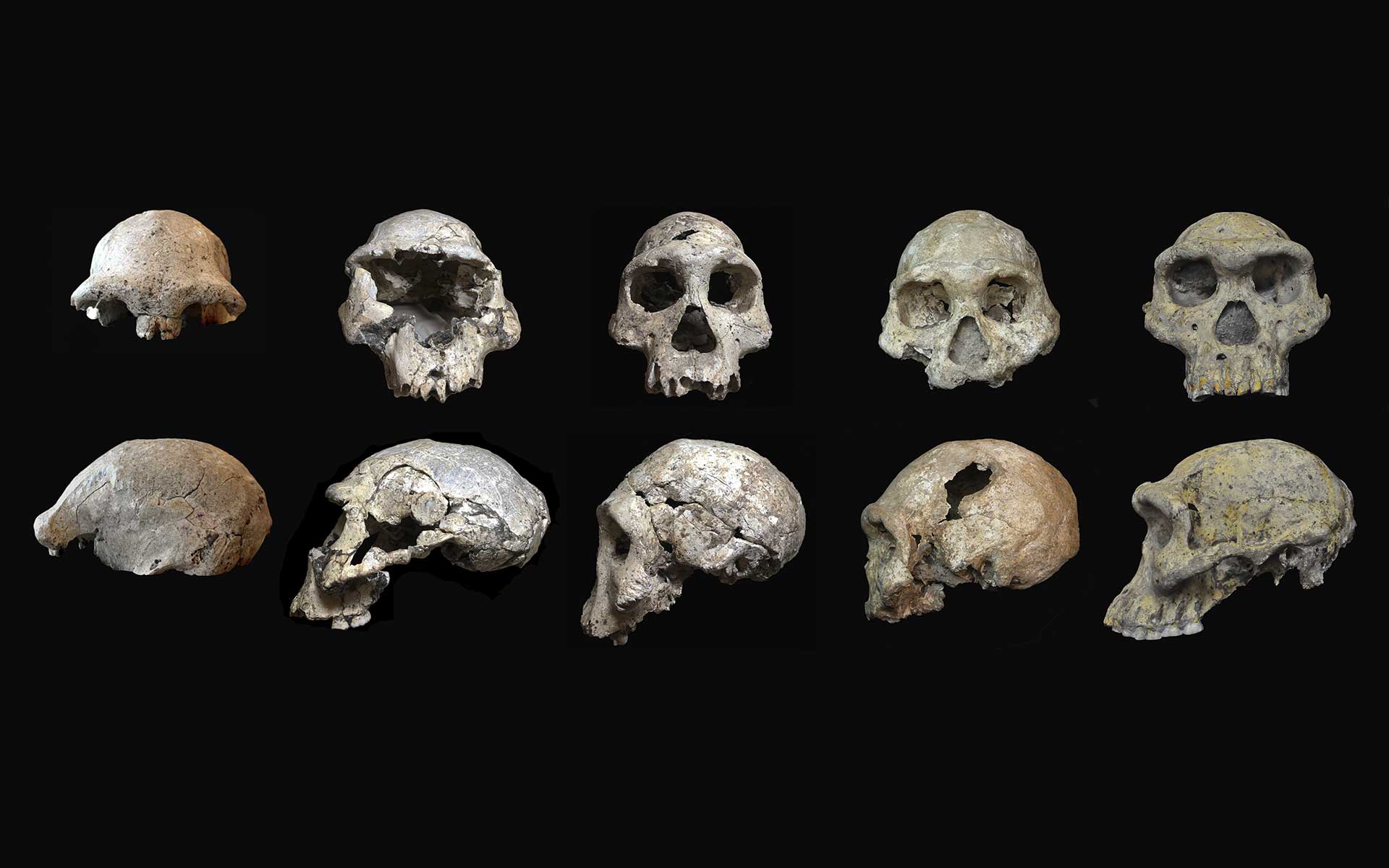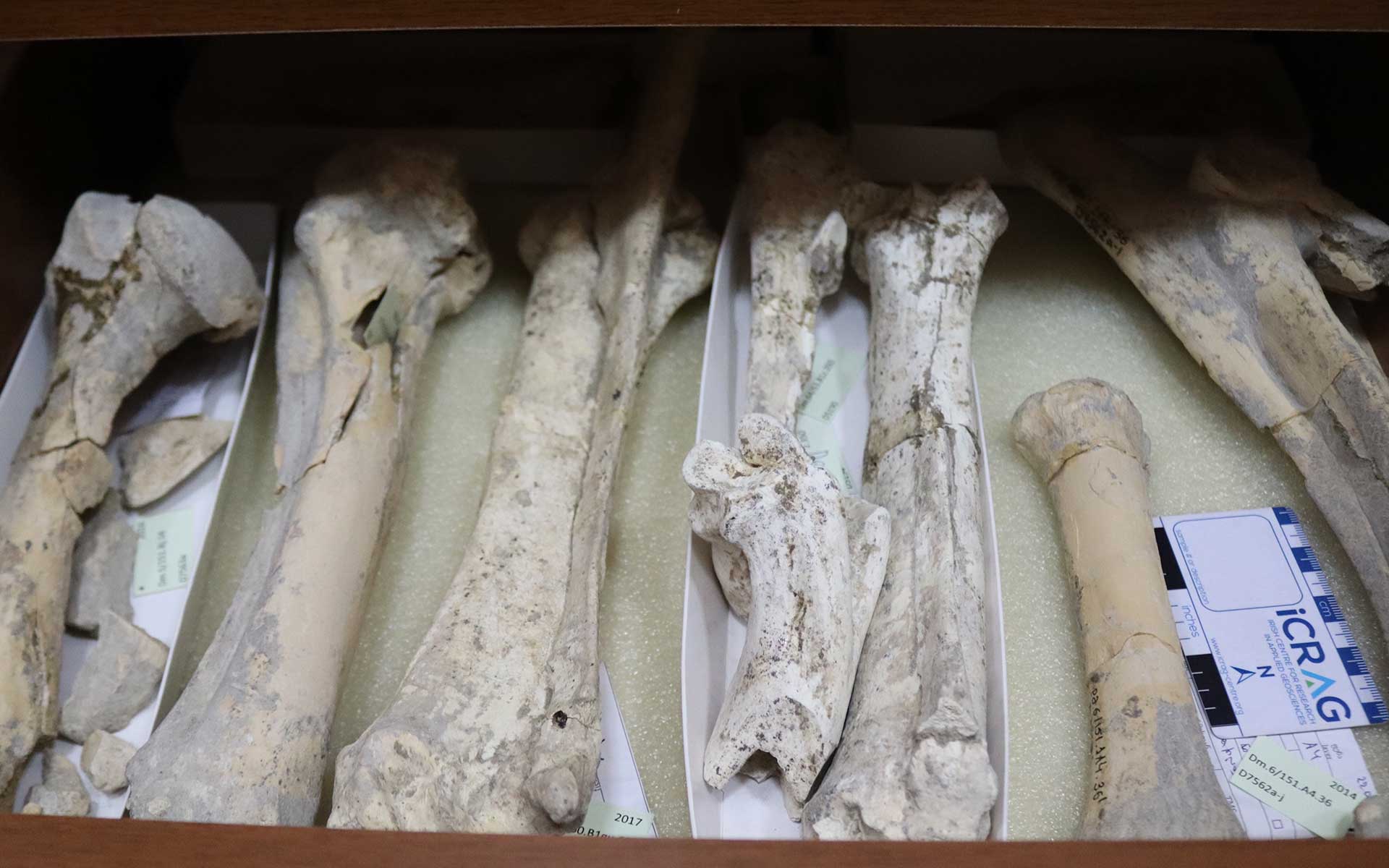
Georgian National Museum.
Housing institution
Georgian National Museum
Location
Purtseladze str 3, 0105, Tbilisi, Georgia
41°41’45.4″N, 44°47’60.0″E
Homepage
Georgian National Museum.
Dmanisi's unparalleled archaeological richness and key role in unraveling human evolutionary history make it an imperative addition to Geo-collection.
- Geo-collection description
Types of objects: Fossils (hominin and faunal), stones, stone artifacts, coprolites.
Dmanisi is an early Pleistocene site, located in the Georgian Lesser Caucasus. Dmanisi Paleolithic site is located beneath the Medieval city of Dmanisi. Dmanisi presents the earliest evidence of early Homo out of Africa, yielding an impressive collection of fossil hominin (about 100) and animal remains (over 8000), stones and stone artifacts (over 11000) with exceptionally good preservation status. The site is extensive and hominin occupation levels are discovered from 1.81-1.77 million years. The hominin bones are recovered in 1.77ma layers, whereas stones and stone artifacts are found throughout the 40k-year interval. No other comparable site exists where the same temporal and geographical setting offers this rich hominin and faunal remains, with such preservation level and geological and archaeological context.
The excavations of the Dmanisi site started in the 1930s by digging the Medieval layers. In 1983 a rhinoceros tooth was identified, which indicated that the site was a minimum of 1 million years older than the Medieval period. In 1991 the first hominin lower jawbone was found and since then the hominin collection expanded. The collection is under the protection of the Georgian National Museum, Dmanisi Reserve Museum.
- Geo-collection value
The Dmanisi Geo-Collection is a world-class repository of archaeological and paleontological treasures that holds immense scientific and educational value. Situated in Georgia, this site is renowned for its exceptional findings, including some of the oldest hominin remains outside Africa, dating back to 1.77 million years ago. These discoveries have been instrumental in reshaping our understanding of human evolution, migration, and the early inhabitants of Eurasia. The rich fossil fauna studies marked the site as the pioneering ground for the first paleoproteomic analysis, a breakthrough that opens new avenues in understanding the evolutionary relationships of extinct fauna and possibilities to understand early human phylogenetics. Culturally, Dmanisi stands as a testament to the shared heritage of humanity, promoting dialogue and understanding across different societies. Beyond its evolutionary significance, Dmanisi encapsulates a rich tapestry of human history, offering profound insights into the lives of our Medieval and Bronze Age ancestors. Educationally, it serves as a vital resource for scholars, researchers, and students worldwide, offering unparalleled opportunities for study and discovery. The Dmanisi Geo-Collection is not just a repository of fossils, it is a beacon of knowledge, casting light on the shared journey of humankind and underscoring the interconnectedness of science, history, and culture.
- Reference
- Cappellini, E., Welker, F., Pandolfi, L., Ramos-Madrigal, J., Samodova, D., Rüther, P.L., Fotakis, A.K., Lyon, D., Moreno-Mayar, J.V., Bukhsianidze, M. and Rakownikow Jersie-Christensen, R., 2019. Early Pleistocene enamel proteome from Dmanisi resolves Stephanorhinus phylogeny. Nature, 574(7776), pp.103-107.
- Lordkipanidze, D., Ponce de León, M.S., Margvelashvili, A., Rak, Y., Rightmire, G.P., Vekua, A. and Zollikofer, C.P., 2013. A complete skull from Dmanisi, Georgia, and the evolutionary biology of early Homo. Science, 342(6156), pp.326-331.
- Ferring, R., Oms, O., Agustí, J., Berna, F., Nioradze, M., Shelia, T., Tappen, M., Vekua, A., Zhvania, D. and Lordkipanidze, D., 2011. Earliest human occupations at Dmanisi (Georgian Caucasus) dated to 1.85–1.78 Ma. Proceedings of the National Academy of Sciences, 108(26), pp.10432-10436.
- Lordkipanidze, D., Jashashvili, T., Vekua, A., De León, M.S.P., Zollikofer, C.P., Rightmire, G.P., Pontzer, H., Ferring, R., Oms, O., Tappen, M. and Bukhsianidze, M., 2007. Postcranial evidence from early Homo from Dmanisi, Georgia. Nature, 449(7160), pp.305-310.
- Gabunia, L., Vekua, A., Lordkipanidze, D., Swisher III, C.C., Ferring, R., Justus, A., Nioradze, M., Tvalchrelidze, M., Antón, S.C., Bosinski, G. and Joris, O., 2000. Earliest Pleistocene hominid cranial remains from Dmanisi, Republic of Georgia: taxonomy, geological setting, and age. Science, 288(5468), pp.1019-1025.
